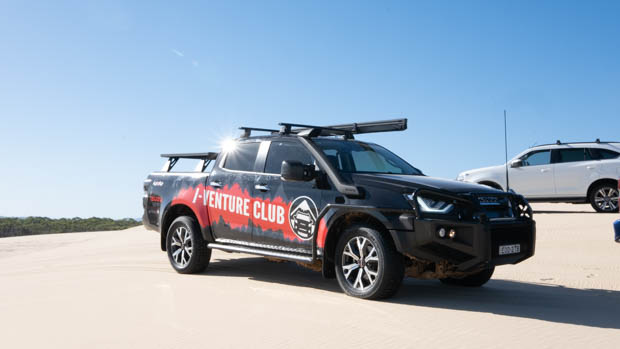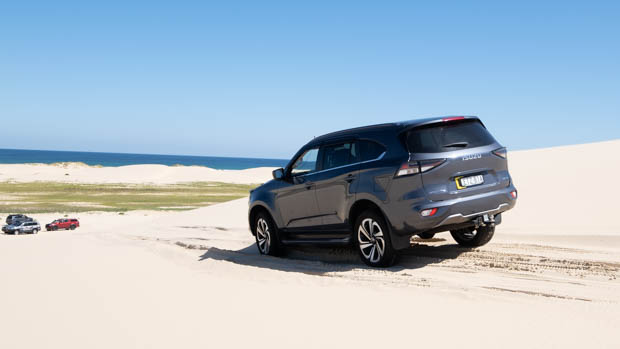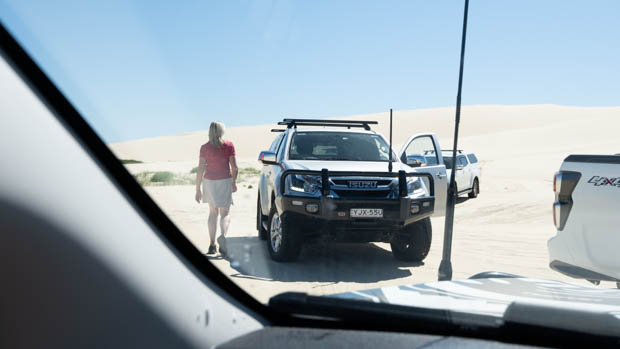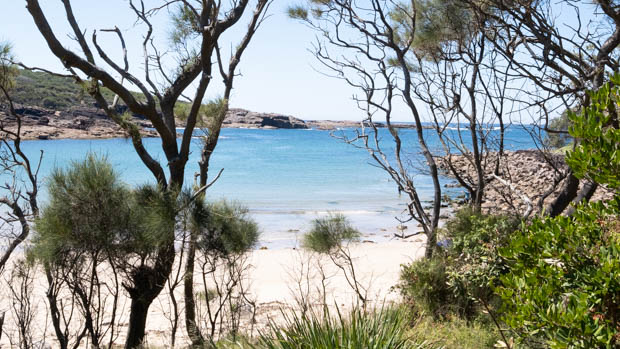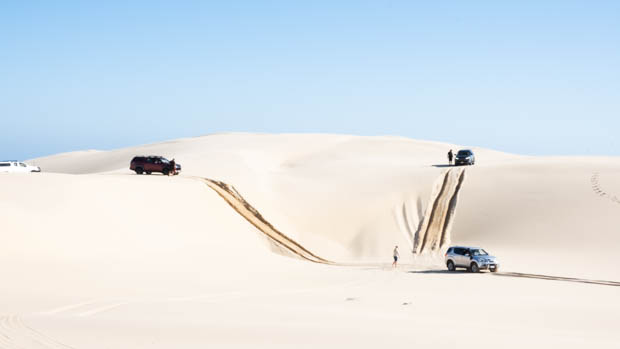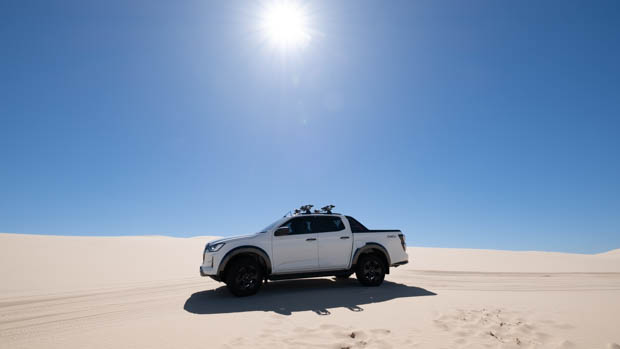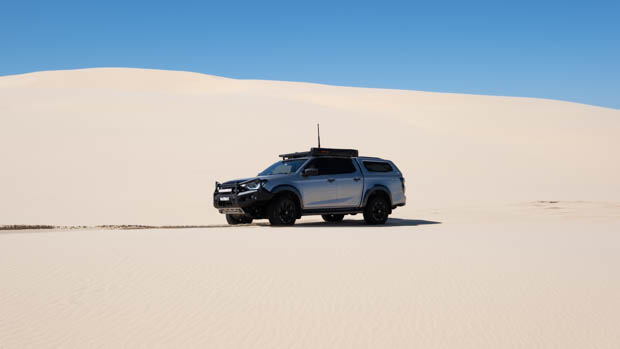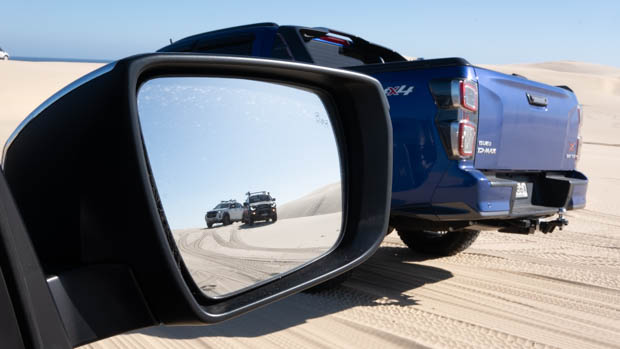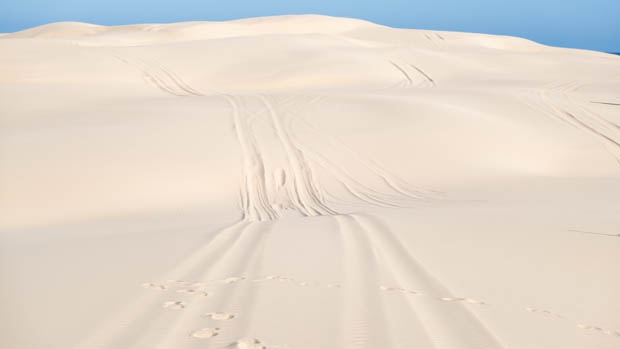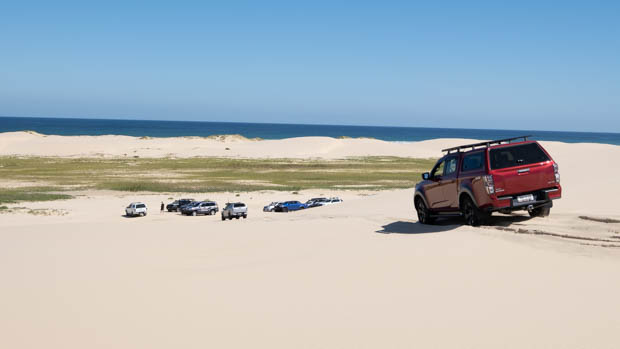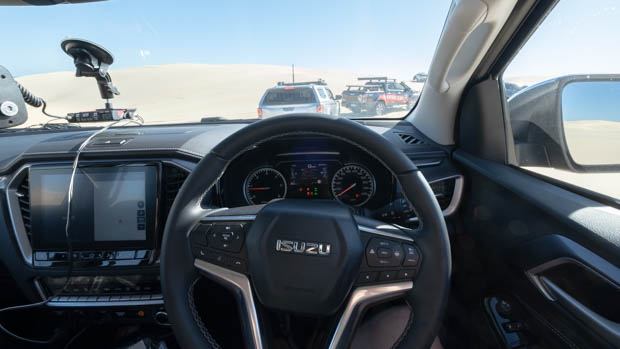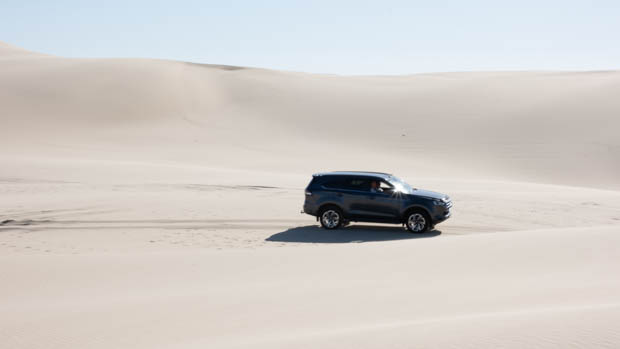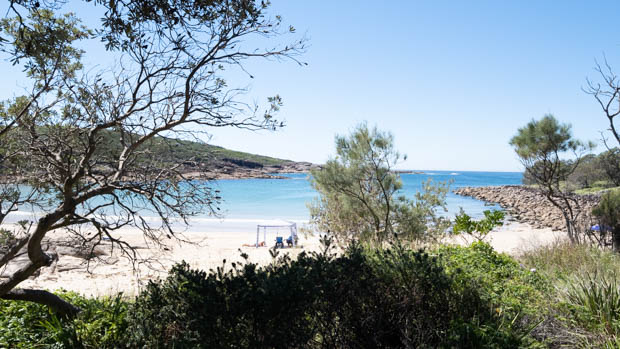-
Car Reviews
- All reviews
- Midsize SUVs
- Small cars
- Utes
- Small SUVs
- Large SUVs
- Large cars
- Sports SUVs
- Sports cars
- Vans
Latest reviews
- Car News
-
Car Comparisons
Latest comparisons
- Chasing Deals
The dunes at Stockton Beach are priceless for the local indigenous community – we got special access for a very special day
It was 4:30 am. My alarm was ringing in my ears. I guessed it was probably time to get the show on the road. Within a few minutes, I was out the door and into the trusty steed Isuzu had loaned me for my adventure – a black 2023 D-Max LS-U+ dual-cab ute.
Isuzu had very nicely invited me along to what it calls an I-Venture Club trip, an opportunity for Isuzu owners across the country – and the odd journalist ring-in – to learn more about how to use their vehicles on and off-road. It’s a brilliant idea, one that many manufacturers haven’t seemed to catch on to just yet.
Outside, it was pitch black – making the whole waking up process that little bit more difficult. Still, I pointed the D-Max north towards Newcastle, two hours up the coast from my hometown of Sydney. I tried my hardest to avoid coffee (for once in my life), but soon enough I’d buckled under the pressure and stopped for something to keep me going.
My destination was Stockton Beach, a 32-kilometre stretch of beachfront paradise famous for its sprawling sand dunes, located not far at all from Newcastle. Known for its shipwrecks, World War II history and its strong indigenous significance, Stockton Beach was a part of the world I’d never been to, making this whole journey that extra bit exciting.
As the sun began to rise along the famous Pacific motorway, I finally started to wake up and enjoy the drive. My trusty Isuzu companion made the journey pretty easy – I was surprised by the decent sound system and comfortable leather seats.
Roughly two hours later, I arrived at the hotel to meet the I-Venture Club team and the rest of the lovely folk who had also travelled from far and wide to do the event. Breakfast was served, giving me some time to become better acquainted with the team.
From mother and son duos looking to get some more off-road experience to seasoned enthusiasts in their decked-out and modified Isuzus, it certainly was a mixed crowd with varying levels of experience.
Chief driving instructor and 4×4 gun David Wilson led us into a conference room and took us through a fantastic theory lesson, from understanding four-wheel-drive systems to which tyres and wheel packages you should buy for your Isuzu. All of this you can read in my supporting story here.
But after a couple of hours of theory, the excitement was building to get out on the sandy tracks and put this theory into practice.
From the hotel to Stockton Beach was only a few minutes up the road, so after a quick lunch stop, we finally entered the beach at the northernmost point of Stockton Beach, called Anna Bay.
I was immediately taken back by the size and scope of the nearby dunes – it was truly like something out of a movie. Blink once and it felt like you were in the Sahara Desert, let alone two hours from Sydney.
My mind clicked with the thought of Pirates of the Caribbean: At World’s End, where Johnny Depp’s Jack Sparrow character is playing in the sand: well, Stockton’s vista looks identical.
The land we travelled on is a place of cultural significance to the Worimi indigenous people. The dunes, in particular, are a sacred place and are not open to the general public.
We’re told by the I-Venture Club team that we are not to drive on anything green, along with doing minimal damage to the sacred lands. We comply by driving in the same wheel tracks as the car in front of us.
We were joined by the lovely folk from 4WD Tag Along and Passenger Tours, too, to guide us along the way and make sure we went where we were supposed to. Out in the distance we saw tracks made by people with little respect for the environment they found themselves in. Under the guidance of the group leaders, though, our crew made sure that we left little impact on this precious area of Australia.
Entering the beach for the first time, with the dunes on our right and a beautiful sandy beach stretching as far as the eye could see, we were led by Bruce, our guide, to our first spot of the day.
As many of the Isuzu owners had driven on a beach previously, the I-Venture Club team got the newcomers among us better familiarised with the new sandy surface, marking out some slower figure eights for acclimatisation and for us to sense how the Isuzu vehicles work when doing tight turns in soft sand while feeling out the limits of grip.
With the dunes directly behind us and the sun directly above, it was certainly a scorching day to be out on the beach. Thankfully, ‘my’ faithful D-Max helped make things more comfortable with some ice-cold air conditioning. Bliss.
After the figure eights were completed, it was time to head onto the dunes, where we spiralled our way around the super-soft sand hills. Much like the first exercise, the team set up a small dune loop for us to experience dune driving first hand.
Using a mixture of low- and high-range four-wheel drive, it was amazing how easily the Isuzu cars got the job done. A lot of people think higher speeds on sand is always the way forward, using momentum, but I found it was actually quite the opposite – steady throttle application is key, regardless of the speed.
Once we had got our head around the dunes, we ascended the massive sand hills and pushed on towards the other side, where the I Venture Club team, led by David Wilson, set up a ‘bogged car scenario’, purposely bogging the I Venture Club D-Max basically down to the chassis rails.
How would we get the vehicle out in such harsh conditions and in super-soft sand?
Enter the Maxtrax. What is it? A long plastic plank with small lugs for grip to assist in recoveries where the car is seriously bogged.
Able to be used for a mixture of surfaces including mud, snow and sand, these plastic treads make life so much easier for four-wheel drives.
So how does it work? David and his team first used a shovel to move sand away from underneath the vehicle and any sand near the wheels. They then pushed the Maxtrax as far underneath the main spinning wheels on diagonal corners of the D-Max.
The team made mention that when the tracks are in place, it’s best to use a tiny amount of throttle to avoid spinning the wheels and creating heat, therefore ripping off the plastic lugs.
And sure enough, with miniscule amount of throttle, the D-Max lifted itself out of the sand with very little effort at all. Job done.
As the sun started to begin its daily setting, I thought it was time to get back in the cars and go home, but we weren’t done yet. The Isuzu team pointed to a big dune nearby, and with an instructor at the wheel, he drove up this sizable dune and dropped off the edge with ease.
I couldn’t believe my eyes. I was not mentally ready to drop the D-Max off a massive dune, especially considering it’s not my car, but the instructors were adamant that we were all going to do it.
One by one, we ascended the dune to the edge. All I could see was the blue sky ahead and the long black bonnet of the D-Max. I couldn’t see where I was going or the bottom of the dune. With the heart racing, I put the D-Max in four-wheel-drive low-range and locked the ute into first gear. I was told by the instructor to hold the wheel straight, take my feet off the throttle and brake pedals and let the car go.
And so I did.
The D-Max lurched over the cliff edge and I tipped steeply toward the base of the dune. But the ute was remarkable. I kept the wheel as straight as I could and the D-Max simply walked down the face with not a hint of instability.
I got to the bottom (thankfully) and drove off relieved. In the background, I could hear the screams of a couple of ladies in another car who had just driven off the edge. It was hilarious.
Afterwards, we got to do the same exercise a few more times, including with and without hill descent control. I found that in both scenarios, the Isuzu did all the work for you. Four-wheel driving has never been easier for newcomers.
Once the more excited customers had calmed down, we all re-grouped and headed back to the beach. We could have simply hopped off the beach and driven home from the northern end, but we all voted to keep sand driving through to the end of the day.
Ripping along the beach, it was so much fun driving through the ruts and feeling the car move around underneath you. As the sun set, a beautiful orange haze came across the beach. It was absolutely gorgeous.
On the way back, we stopped at the tin town – a group of sheet metal dwellings at the base of the dunes. I couldn’t believe people actually lived out there.
We managed to get back to the bitumen with plenty of time to spare and aired up the tyres back to factory specifications.
But this wasn’t the end of the road for me. The open road was calling back to Sydney. I thanked David and his team and set off as the sun dipped on the horizon.
Two hours later, I arrived home, tired, hungry and a little bit smelly, too. But it had been a truly great adventure, and one I would remember for a very long time. I fell asleep with the sounds of the beach and the wind from the dunes still ringing in my mind.
Latest news
About Chasing cars
Chasing Cars reviews are 100% independent.
Because we are powered by Budget Direct Insurance, we don’t receive advertising or sales revenue from car manufacturers.
We’re truly independent – giving you Australia’s best car reviews.
